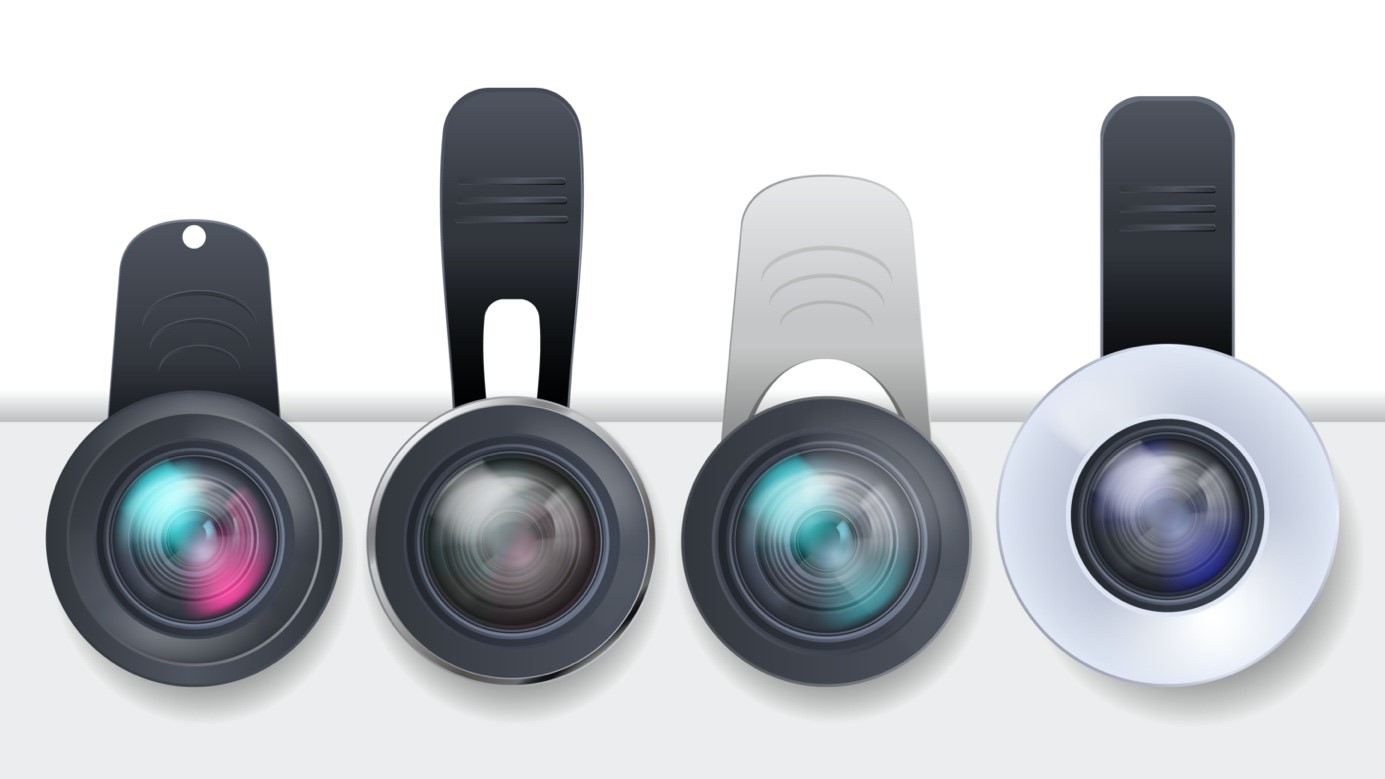Smartphone lenses: take photos like a pro
8. April 2022 Published by Raphael DoerrCellphone pictures in professional quality? Smartphone lenses make it possible with little effort and low cost.
It was just 15 years ago that smartphones conquered everyday life as practical all-rounders. But back then, their cameras had an image resolution of just two megapixels. And we’d better not talk about exposure times. Today, smartphone cameras have 48 megapixels and fast shutter speeds.
The meteoric development of smartphone photography was accompanied by the demise of the compact camera. Because the smartphone is always with you and delivers good quality. Moreover, pictures and films can be easily edited and shared. Consequently, the compact camera simply became superfluous – and ultimately a niche product.
But mobile phone cameras have one big disadvantage compared to their compact colleagues: they have fixed lenses and fixed focal lengths. This means that there is no optical zoom and only a fixed field of view per installed lens. A shortcoming that can be remedied with a smartphone lens. With such a clip-on lens, you can take pictures in professional quality – and with your own mobile phone.
Smartphone lenses: When to use them?
For most, the combination of smartphone and clip-on lenses replaces a compact camera. Party snapshots, traditional family photos in front of the Christmas tree or epic landscape pictures: Everything is possible – even video clips.
Those who are active in social media also benefit. Here, the camera attachments offer even more professional pictures and videos without complex equipment. This means more likes and reach on Facebook, Twitter, Instagram and the like.
The general advantage of smartphone lenses is: shooting, editing and publishing can be done on one device. And even photo books can be ordered in a few clicks.
What types of clip-on lenses are there?
Actually, all the usual types of lenses are also available as add-ons for smartphones. The most important are:
- Telephoto lens: This allows you to get closer to distant objects. The advantage of this optical zoom is that there is no loss of quality. Digitally zoomed-in pictures, on the other hand, become pixelated.
- Macro lens: The lenses of a macro lens allow the photographer to get very close to a subject – and still shine with razor-sharp results.
- Wide-angle lens: This enlarges the shooting angle and thus the image detail – for impressive landscape shots. Also suitable for indoor shots where you just want a little more on the photo.
- Fisheye lens: The fisheye lens is an extremely wide-angle lens. It allows you to capture even larger areas of the image. But you have to live with extreme distortion. These lenses are especially popular for joking portraits and outdoor sports.
- Kaleidoscope lens: These lenses are made for particularly creative (hobby) photographers. Depending on the lens, they distort the motif and multiply it. This creates a completely new view of reality.
Smartphone Lens Buying Guide
There are many manufacturers and even more different products. But before you start looking for the optimal smartphone lens, you should first clarify a few questions for yourself.
- In which situations and for what purpose is the additional equipment used? The differences in price – but also in quality – are enormous. For private use, a simpler version may be sufficient. As a professional influencer, on the other hand, you might expect a little more…
- Which lenses help to achieve the desired results? Which ones do you really need? Manufacturers usually offer clip-on lenses in sets that include several types of lenses.
- How is the lens attached? From simple but rather wobbly clips to magnets to extremely stable mounts, there are many different methods. Better said: the more stable the attachment, the sharper and better the resulting photos.
- Which smartphone will the clip-ons be used with? And does someone else in the family want to use the lenses with a different phone? Some of the lenses only fit one type of smartphone, while others are suitable for many or even all models.
- Is a tripod included in the scope of delivery? Especially with telephoto lenses, photos tend to be blurred at high magnification. A stable tripod prevents this.
And finally three examples
One thing is for sure: the range of lenses is as diverse as the needs of the users. For us, these three lens sets stand out from the crowd:
- Selvim lens set: The comprehensive set comes with 4 lenses: 22x telephoto lens, 25x macro lens, 0.62x wide-angle lens, 235° fisheye lens. A tripod provides stability during photography. This is well made and, together with the eyepiece cover, cleaning cloth and lens clip, fits perfectly in the bag provided. The set is suitable for all smartphone models and delivers sharp images.
- APEXEL 6-in-1 Mobile Phone Lens Kit: This set is particularly suitable for landscape photography. The following lenses are included in the kit: Super 205° fisheye lens, 140° wide-angle lens and 25x macro lens, star filter and a polarisation filter. The attachments are suitable for most smartphones.
- Beastgrip Pro Universal Smartphone Camera Rig: When it comes to mounting, almost nothing beats this universal lens rack, which comes with a 0.43 wide-angle lens and 180° fisheye. It is particularly suitable for outdoor photography. Thanks to its stable mounting frame made of glass-filled polymer and aluminium, it is suitable for all smartphone models and enables wobble-free shots. Particularly practical: despite the frame, all smartphone buttons and functions can still be operated comfortably.
 Comments
Comments

 en
en 








